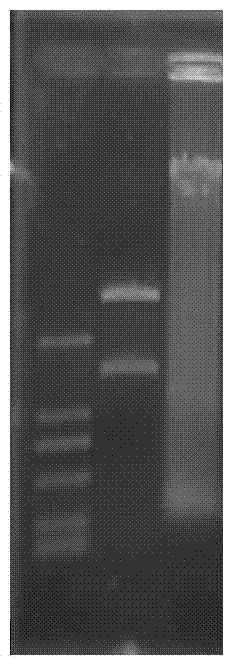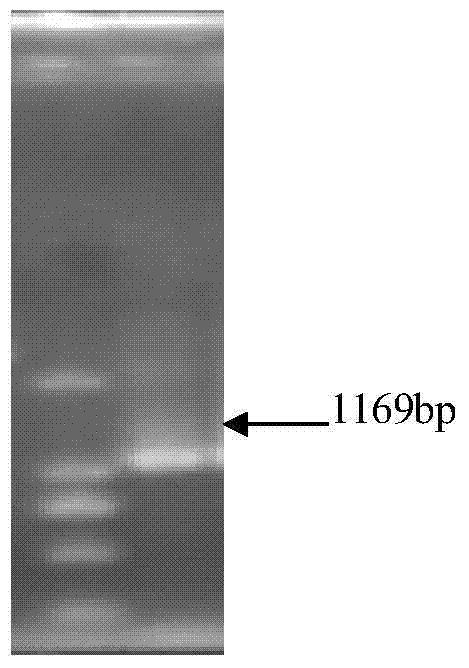Analysis of promoter and activity of cyp6a13 in pea aphid
A pea aphid and promoter technology, applied in the field of DNA sequence, can solve the problem of the lack of a pea aphid promoter and achieve the effect of stable expression
- Summary
- Abstract
- Description
- Claims
- Application Information
AI Technical Summary
Problems solved by technology
Method used
Image
Examples
Embodiment 1
[0024] Example 1: Cloning of the CYP6A13 promoter of the pea aphid
[0025] The promoter of the pea aphid P450 gene CYP6A13 (the promoter sequence includes the DNA nucleotide sequence of the -1bp to -821bp region relative to the transcription start site of SEQ ID NO: 1), in the 5' region sequence of the pea aphid CYP6A13 gene get identified.
[0026] The pea aphid P450 gene CYP6A13 is registered in NCBI GenBank (accession number: HM009309), and the sequence listing shows the DNA sequences of the promoter and 5' untranslated region of the above-mentioned gene of the present invention. In the list of promoter sequences in this document, the base of the transcription initiation site is indicated by +1, and ATG is marked in red. And use the promoter analysis website to analyze the core elements of the promoter.
[0027] Promoter analysis website http: / / www.gene-regulation.com / pub / programs / alibaba2 / index.html.
[0028] Taking pea aphid genomic DNA ( figure 1 ) as a template, us...
Embodiment 2
[0029] Example 2: Construction of the pea aphid CYP6A13 promoter expression vector pGL3-CYP6A13(-1322 / +229)
[0030] The pisa aphid CYP6A13 promoter and 5' untranslated region (see sequence listing) cloned in Example 1 were inserted into the pGL3 vector, thereby constructing the pGL3-CYP6A13(-821 / +349) vector.
[0031] More specifically, the promoter sequence was amplified using primers (5-ACGCGGTCGTTCGCTAGATTCAACAGGGT-3, 5-CTCGAGAATCGGCTTGATGTAGGGCAC-3) and cloned into the MluI and XhoI sites of the pGL3 vector to construct pGL3-CYP6A13(-1322 / +229 ), used to drive the expression of Luc+, identified by PCR ( Figure 4 ) and enzyme digestion identification ( Figure 5 ) to obtain the recombinant plasmid of the promoter and the vector.
Embodiment 3
[0032] Example 3: Identification of the activity of the CYP6A13 promoter of the pea aphid of the present invention
[0033] Sf9 cells were seeded in 24-well plates (4×105 cells / well), and were transiently co-transfected with pGL3-CYP6CY3(-2230 / +71) construct (2 μg / well) and control with Cellfectin II reagent (Invitrogen; 2 μL / well). Reporter plasmid phRL-TK (Promega; 0.2 μg / well), . After 48 hours, cells were harvested and the resulting lysates were used to measure luciferase activity (Promega). Such as Image 6 As shown, the cells transfected with pGL3-CYP6A13(-821 / +349) had very high luciferase activity.
PUM
 Login to View More
Login to View More Abstract
Description
Claims
Application Information
 Login to View More
Login to View More - R&D
- Intellectual Property
- Life Sciences
- Materials
- Tech Scout
- Unparalleled Data Quality
- Higher Quality Content
- 60% Fewer Hallucinations
Browse by: Latest US Patents, China's latest patents, Technical Efficacy Thesaurus, Application Domain, Technology Topic, Popular Technical Reports.
© 2025 PatSnap. All rights reserved.Legal|Privacy policy|Modern Slavery Act Transparency Statement|Sitemap|About US| Contact US: help@patsnap.com



